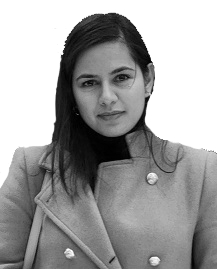Farwa Ahmed
 ORCID ID: 0000-0002-2209-7822
ORCID ID: 0000-0002-2209-7822
Research Project Title: Low complexity algorithm development for spectrum sensing beyond 5G communication
Supervisors/s: Dr. Pat Chambers, Dr. Paul O’Leary , Dr. Darren Francis Kavanagh
Project Funding: South east regional development PhD research programme (SERD scholarship)
- Biography
- Research Project Description
- Publications and Outputs
Biography
I, Farwa Ahmed, have completed MS (Electrical Engineering) from COMSATS University Islamabad, Pakistan in 2017. Previously, I did BS Electrical Engineering from the same university in 2015. In my MS thesis, I have investigated void-hole avoidance-based routing techniques to prolong the network lifetime of underwater wireless sensor networks. I have (co) authored 6+ research publications in international journals/conferences and have served as an invited reviewer of two international journals.
Currently, I am a Ph.D. researcher at the EngCore Lab at SETU, Carlow. I am working on low complexity algorithm development for signal detection employing cognitive radios for spectrum sensing beyond 5G communication.
Research Project Description
The aim of the project is to develop novel spectrum sensing (SS) algorithms that will allow low bandwidth secondary users (SU) to detect weak signals of primary users (PU). Detection of presence & absence of primary users comes under SS and algorithms present in literature have taken assumption of same bandwidth for PU and SU in SS process. SS is fundamentally part of 5G technology named as cognitive radios. This concept works for unlicensed transmissions by cognitive radios to exploit spectrum holes or unused spectrum chunks in order to provide better spectrum utilization. Project serves the contribution as:
- It focuses on low bandwidth SU communication in high bandwidth PU network.
- Considering fewer signal samples makes the algorithm less complex and more hardware efficient.
Publications and Outputs
Peer reviewed journal articles
- Javaid, N., Ahmed, Farwa, Wadud, Z., Alrajeh, N., Alabed, M. S., & Ilahi, M. (2017). Two hops adaptive vector-based quality forwarding for void hole avoidance in underwater wsns. Sensors, 17(8), 1762.
Summary: The performance of sparse under water wireless sensor networks (UWSNs) is studied in this paper. The proposed protocol tackles the void hole problem. Routing decisions are made on the basis of neighbour node distribution in the desired field of interest. Two-hop neighbour information before forwarding the data packet reduces the probability of void holes. The relative distance of the forwarding node and the neighbour information leads to optimal forwarder selection, which improves packet delivery ratio.
- Ahmed, Farwa, Wadud, Z., Javaid, N., Alrajeh, N., Alabed, M. S., & Qasim, U. (2018). Mobile sinks assisted geographic and opportunistic routing based interference avoidance for underwater wireless sensor network. Sensors, 18(4), 1062.
Summary: In this study, the proposed schemes have performed collaborative tasks of routing data towards the destination while coping with communication voids. The proposed schemes exploit geographic information to route data greedily towards the son buoys. Three dimensional division has made network scalable and forwarding is directional because of selection of upstream nodes from the neighbour cube. In this way, hops taken to execute a complete transmission from sender node to son buoy has reduced significantly. Moreover, interference avoidance in this algorithm helps in reduction of packet loss, and in improving packet delivery ratio.
- Khan, Z. A., Amjad, S., Ahmed, Farwa, Almasoud, A. M., Imran, M., & Javaid, N. (2023). A blockchain-based deep-learning-driven architecture for quality routing in wireless sensor networks. IEEE Access, 11, 31036–31051.
Summary: This study presents a three-layered architecture. The first layer comprises a wireless sensor network with both malicious nodes (MLs) and legitimate nodes (LNs). The trained deep learning models also detect the MNs in the network. Additionally, when MNs are removed from the network, the LNs are registered in the blockchain using Proof-of-authority (PoA) consensus mechanism.
Conference proceedings and papers
- Ahmed, Farwa, & Arslan, H. (2021). Signal statistics based multiple ap detection for smart spectrum sharing in lte-u/wi-fi coexistence. In 2021 ieee 93rd vehicular technology conference (vtc2021-spring) (pp. 1–5).
Summary: In this study, detection of multiple Wi-Fi access points (APs) is achieved at LTE-U base station (BS) for fair coexistence with co-located Wi-Fi networks. An optimal detector is proposed that exploits second order statistics (SoS) and correlation properties of OFDM transmitted signals by WiFi APs. In particular, it has lower complexity while compared with the packet decoding approach. We compared the proposed optimal detector with the conventional detection techniques, it performs better for a small set of correlation samples.
- Ahmed, Farwa, Javaid, N., Wadud, Z., Sher, A., & Ahmed, S. (2019). Geospatial division based geographic routing for interference avoidance in underwater wsns. In Recent trends and advances in wireless and IoT-enabled networks (pp. 207–214). Springer
Summary: In underwater wireless sensor networks (UWSNs), geographic routing paradigm seems promising choice for data transmission in severely limited acoustic communication channel conditions. The main challenge of geographic routing in sparse network conditions is communication void. In this context, we propose geospatial division based geo-opportunistic routing scheme for interference avoidance (GDGOR-IA) focusing on interference in the network. The scheme is twofold, selection of target cube and selection of optimal next hop forwarder node in the target cube.








